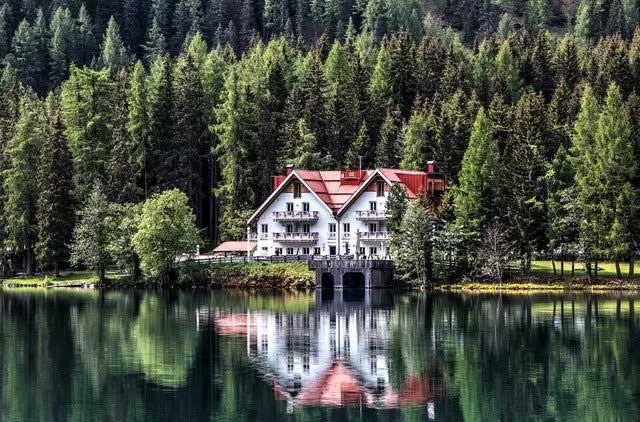The deciduous trees such as oak, maple, and elm often take centre stage when it comes to landscaping, but when their leaves wither away in the fall, they may no longer provide that much beauty. Trying to figure out which trees you want to put in your yard is a big decision. You want to make sure that the trees you choose will look nice, perform well, and grow and thrive in your yard at any time and any day. An evergreen tree may be just what you’re searching for if you want a tree that is reasonably low-maintenance and delivers year-round beauty.
If you get to know them a little bit better, you will understand that they’re more than just a staple of the winter landscape, they also provide beauty and wildlife habitat throughout the year.
What Is Special About Evergreen Trees?
Essentially, an evergreen is a plant or tree that keeps its leaves all year round. The evergreen’s leaves remain constantly green, regardless of the season (thus the name). There are over 100 types of evergreens trees in North America, so if you’re thinking of incorporating them into your property landscaping, you’ll never run out of possibilities.
Here are a few of the numerous reasons why we should plant these trees:
- Natural Snow Fence
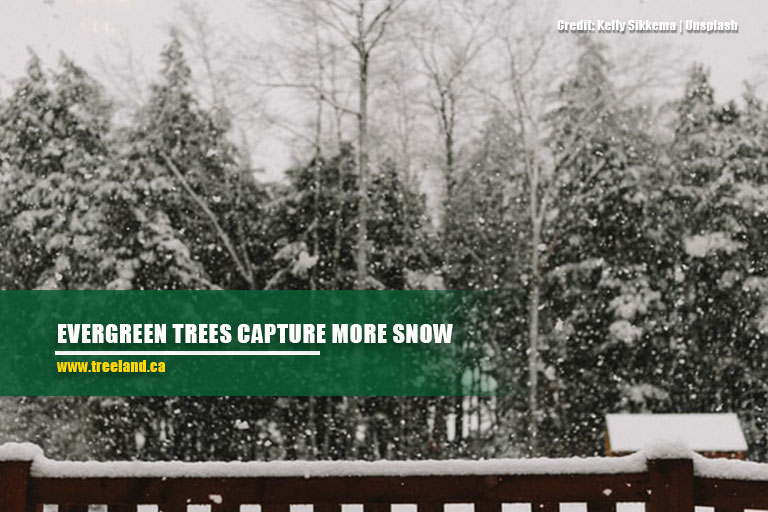
Snow fences are commonly used to keep blowing and drifting snow from blocking driveways or closing roadways. Planting a living snow fence with evergreen trees is an elegant alternative to what can often be unappealing fencing. They are also more cost-effective, cheaper to plant and capture more snow than a slatted fence. Additionally, they can last longer and require less upkeep. A slatted fence will survive 7 to 20 years on average, whereas a living snow fence will last 40 to 50 years. Many of the trees that were planted as living snow barriers in the early 1900s are still protecting railroad lines and major roadways from drifting snow today.
- Wind Reduction
All trees help to keep a home’s climate stable, but conifers are particularly effective windbreaks. A row of evergreens can effectively block strong winds, protecting your property. During the winter, the protection from the cold weather means fewer drafts, and in the summer, your home will be shaded and shielded from the heat. All of this weather protection can significantly contribute to increased energy efficiency and decreased heating and cooling costs.
- Privacy
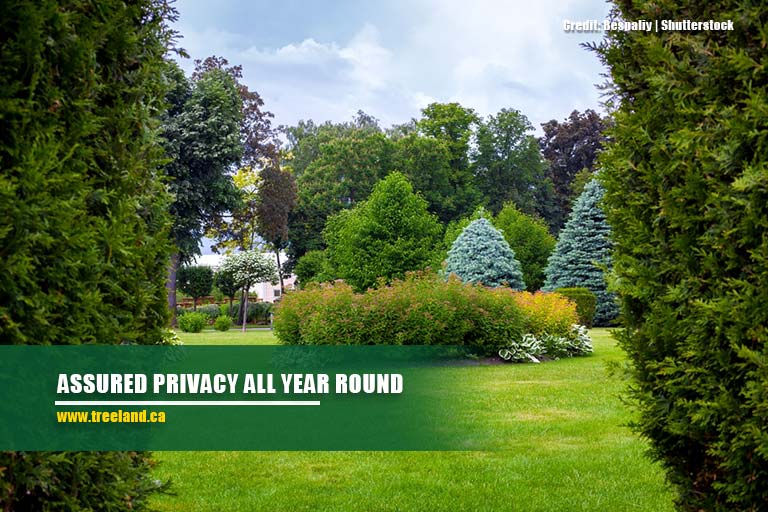
Everyone puts in a lot of effort to make sure that the outside space is both pleasant and enjoyable for the entire family. Nobody wants their garden parties, backyard fires, and family gatherings to be on display to the public. This isn’t much of an issue during summer when deciduous trees are full of leaves and shrubs are in full bloom. However, that level of privacy can’t be assured for the rest of the year unless you have fast-growing evergreen trees for privacy.
Dense coniferous branches and evergreen hedges create a natural privacy screen for your yard, allowing you to enjoy winter activities with your family and early spring garden work without being ogled on by spectators.
- Year-Round Colour
One of the best reasons to plant evergreen trees in your lawn is that they don’t lose their leaves and they keep their endearing good looks and colour throughout the year. Evergreens boldly cling to their hardy foliage even when the branches of your deciduous trees and shrubs are bare in the winter. While it’s important to have a diverse range of plants and trees in your garden for both aesthetic and environmental reasons, you’ll love the company of conifers in the winter.
The colour green has been proven to not only have a relaxing impact but also help to ease eye strain. So it helps to still have a little pop of colour among the blanket of snow to remind you that winter doesn’t last forever.
- Air Purifier
Carbon dioxide, which is produced from burned fossil fuels, is a heat-trapping gas that prevents heat from escaping into space and instead traps it in our atmosphere. Trees take carbon dioxide from the atmosphere through photosynthesis, and in exchange, they release pure, fresh oxygen into the atmosphere. Simply, trees are responsible for the air we breathe.
While this is true for all trees, winter is that one time of the year when air pollution is at its peak and leaves necessary to photosynthesize are scarce. This is where evergreens come to the rescue. Since they never lose their leaves, they’re the only ones that continue to filter air when cold air stops toxins from escaping the atmosphere.
- Food Source and Shelter for Wildlife

Many native birds and animals spend most of the winter looking for shelter and sustenance. Fruit, berries, blossoms, insects, and nectar are among the foods that are in high demand. Even though evergreens don’t have everything, they do provide important cones and frequently house insects in their bark. Birds and squirrels benefit from the thick evergreen boughs because they provide much-needed protection from the cold. Even if the urban developments have eaten up wildlife habitat, there’s no reason why you can’t reclaim part of it. Your children will be able to experience the joys of nature right in their own backyards, and the animals will appreciate it as well.
- Energy Conservation
Trees not only give privacy or oxygen, but they also help to purify the air, conserve water, and prevent soil erosion. In the summer, trees provide shade for your yard, making it safer and more fun to spend time outside on hot days. They also serve to shield homes from the hot sun, which can help to moderate temperatures and reduce the work that air conditioners have to do.
Similarly, in the winter, evergreens protect our homes from the elements. Cold winter winds chill your home, forcing your furnace to keep pumping out heat to compensate. With their thick branches and sturdy foliage, tall conifers can block such breezes, providing your heating system with a much-needed break. You’re better off with trees that are both beautiful and cost-effective.
Few Things to Consider When Planting Evergreen Trees
Just like all plants, evergreen trees have specific needs. If you’re thinking of getting evergreen trees for landscaping, here’s 3 important things to remember:
- Care Requirement
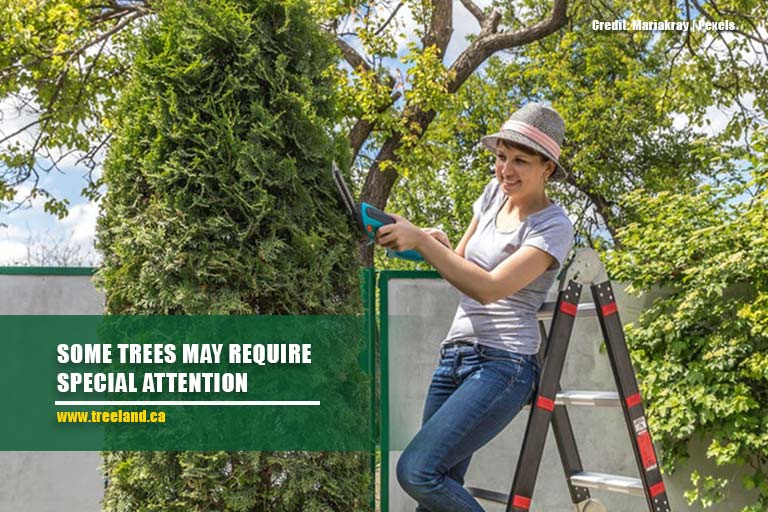
Most evergreen trees require full to partial sunshine. Each species will have different requirements for soil drainage, as well as tolerance for extreme weather, insects, and other pests. Some may need to be pruned and fertilized, while others will shed some of their needles. Keep these in mind when deciding which kind is best for you.
- Tree Size
What size evergreen tree is best for you depends on your demands.
It’s crucial to know how big an evergreen will get when it reaches full maturity, as well as how long it’ll take to get there. Evergreens can grow to be anywhere from 4 and 60 feet tall. Some evergreen trees grow quickly, while others take a long time to reach their full height.
- Location
You have to think about where you should plant your evergreen trees. Think how the tree would appear once they reach their full height. Plant evergreen trees at least 10 to 15 feet away from your home’s foundation and at least 5 feet away from patios, fencing, and walkways.
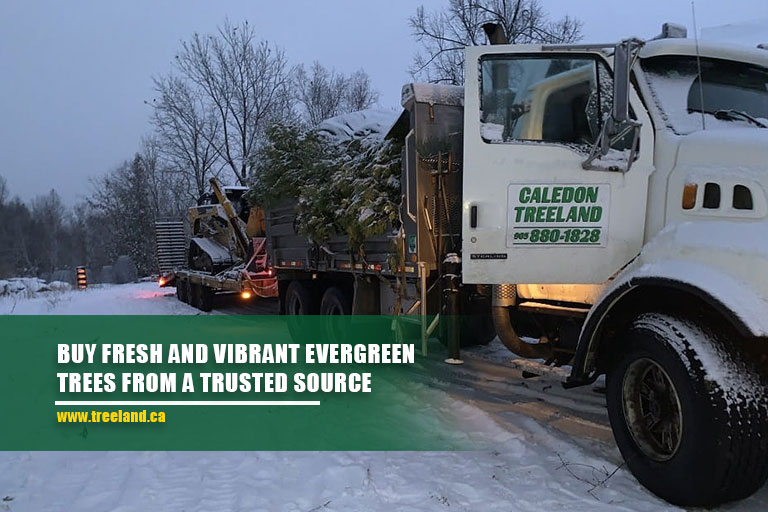
While flowers and deciduous plants are generally the centres of attention in a landscape, evergreens deserve their place in the spotlight. There are many gorgeous species of evergreen trees to pick from, and you may get the benefits of all of them. Caledon Treeland offers vibrant Evergreen Trees for Sale in Toronto. To find more information about our evergreen varieties, schedule a visit to our tree farm or call us at (905) 880-1828 today.

